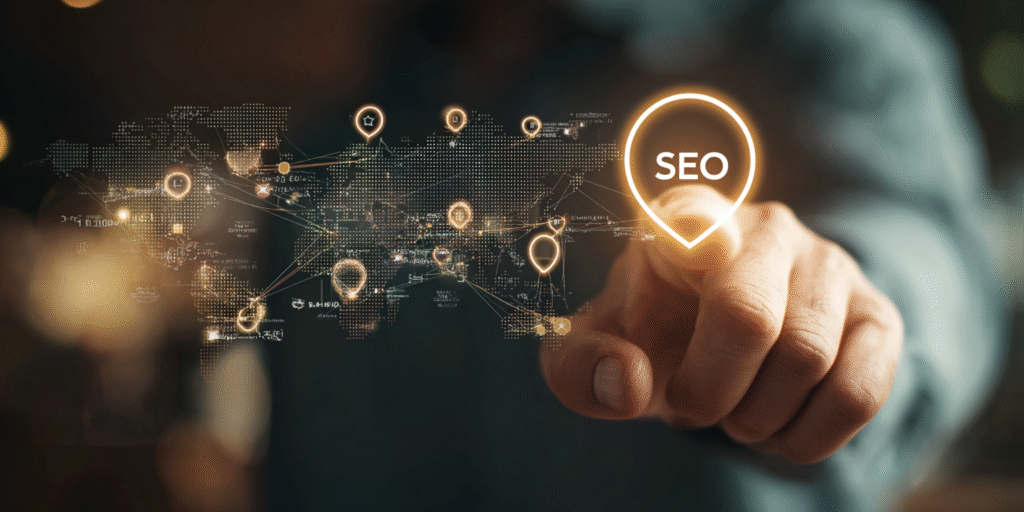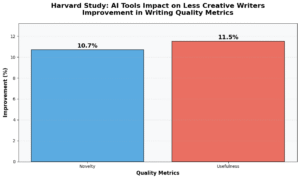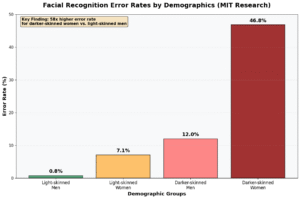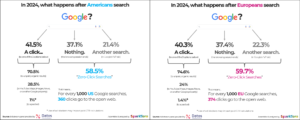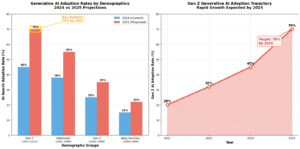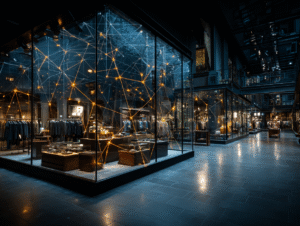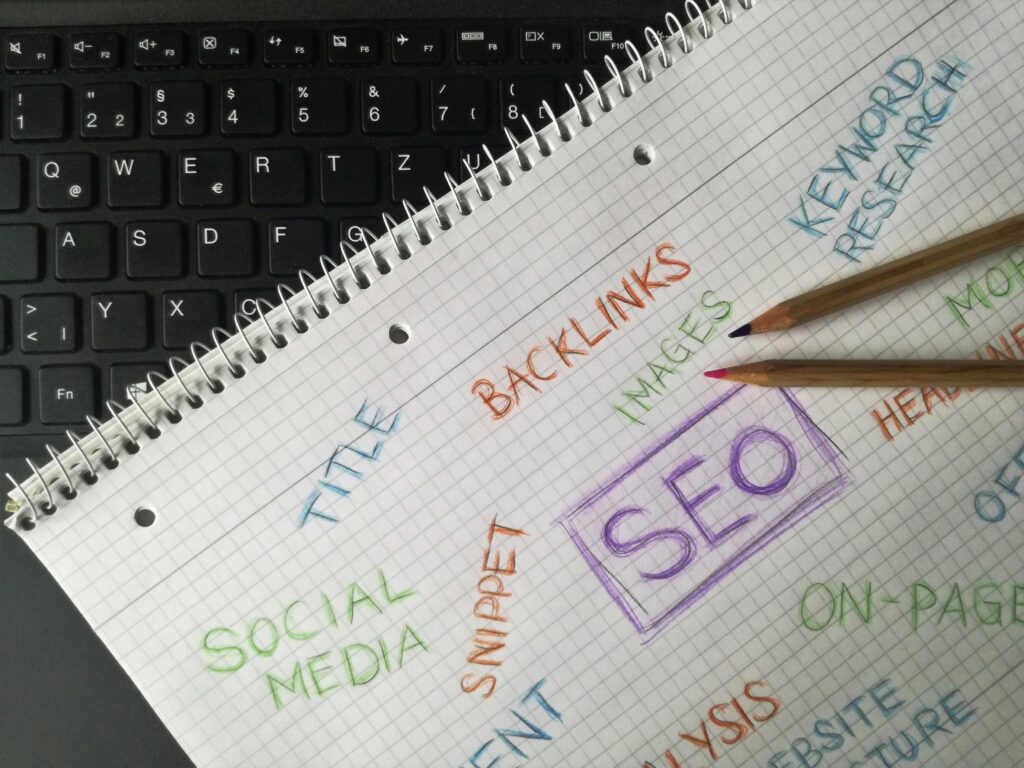Category: AI
The Growth Hacker’s New Secret Weapon: Prompt Engineering
Sep 30, 2025 | 3 Min Read

Growth hacking requires trying to achieve more with fewer resources- limited time, tight budgets, and limited resources. In an era characterized by minimal attention spans and rapid trends, quick initiation, testing, and iteration cycles have become invaluable for marketers. This agility is being enhanced by another phenomenon: prompt engineering.
Prompt engineering, or intelligent prompt crafting, is changing how companies conceptualize, test, and adapt growth strategies. Growth hackers can formulate effective marketing tests in minutes due, in part, to AI cutting out the need for tedious brainstorming with creative teams (Federiakin et al., 2024).
Prompt engineering is about more than inquiry. It also involves transforming a vague concept into a fully executable piece of advertisement writing, campaign blueprint, or growth loop. Effective AI prompt design allows marketers to transform raw ideas into fully developed marketing campaigns in under 4 hours (Chen et al., 2025).
The rapid growth of prompt engineering may be validated with data from the Grand View Research, where the prompt engineering market was valued at USD 222 million in 2023 and projected to reach about USD 2.06 billion, at a CAGR of about 32.8 %. Due to the quick adoption of large language models in marketing, customer service, and software development, it has facilitated growth. Companies are investing in specialized prompting processes for quicker time-to-acquisition and development to market and stronger customer engagement. The positive trend shown in the chart implies prompt engineering is moving from its niche experimental status to a fully mature, revenue-critical capability (Grandviewresearch.com, 2024).
Real-world use cases
It is already being used; below are some of the real-world scenarios (PromptLayer, 2025).
- Growth Loops: Prompts can be created to train the AI to create endless content or engagement bait to attract users to return.
- Referral Campaigns: Have the AI assist in designing reward levels, high-converting messages, and provide instructions to automate outreach to incentivize growth by word of mouth.
- Viral Content Prompts: Ask the AI to generate interesting memes, social captions, or headlines to share that are aligned to real-time trending conversations.
A Framework that Works: Idea → Prompt → Test → Refine
To incorporate prompt engineering into growth hacking, it’s helpful to think about this type of framework that emphasizes the cycle you will repeat:
- Idea – Determine the main goal for growth, such as increasing user acquisition or improving user retention.
- Prompt – Write prompt instructions that result in many campaign angles, messaging variations, or creative assets.
- Test – Use the best output to run small and fast experiments.
- Refine – Understanding the data, what worked, and updating your prompts for follow-up edits and improvement.
The cycle of Idea → Prompt → Test → Refine is what allows growth teams to be agile and intensely data-driven.
With constant monitoring of the outcomes and perfecting prompts, any interaction with your AI could become another growth hack you could consider. Just a single prompt is enough to turn into dozens of streamlined campaigns, messages, and experiments.
Instead of promoting as a one-time signal, growth hackers believe that this feedback loop can teach us to learn how to target the audience, to take creative angles, and so on. This implies that the prompts will eventually turn into a living asset over time, getting better with every test, uncovering the latent opportunities, and ensuring your marketing plan will be fast, market-responsive, and highly successful (Sahoo et al., 2024; Schulhoff et al., 2024).
For example, a new startup that launches a new app can make dozens of TikTok ad scripts within a second and refine it into the top three scripts and post all three ads the same day with a single well-written prompt.
Prompts as Growth Hacks on Demand
The greatest benefit of prompt engineering is that it is demand-scaled. Teams are able to turn on new growth hacks any time, rather than being inspired to work creatively. Good prompts have the potential to produce:
- Drip sequences of emails based on specific customer groups.
- SEO-focused ideas for blogs that would take advantage of high-intent keywords.
- Ad creatives: Multiple platform customization, multiple languages.
Growth hacks can be employed, with prompts when necessary, allowing growth hackers to be campaigning and experimenting all the time, without consuming a lot of money or exhausting teams.
The Road Ahead: From Early Adopters to Essential Skill
Social media marketing was once a niche feature of the marketing strategy of a brand and is now a mandatory busk, prompt engineering is also fast becoming a developmental skill set. It will not take long before any marketing team will require a specialist within its ranks who can do the work of an AI language interpreter or any copywriter to narrate a story (Zhang, Y. & Chen, L., 2025).
Companies that have embraced prompt engineering as a part of their marketing strategy are already seeing tangible and strategic advantages that give them a competitive edge:
- Faster time to market: Using AI to ideate, write copy, and even test campaigns is permitting teams to transform an idea into a launch in days rather than weeks. Such freedom allows businesses to hop onto trends when they are trending and develop a following before their rivals can get a clue of the trend.
- Lower cost per acquisition: Marketing teams can be able to save massive budgets by automating testing and creating creative iterations in large numbers. The marketers can do more with less money.
- Higher engagement rates: Potential and existing customers also interact better with the content when it is individually tailored and based on data. There is also some degree of immediacy in the tone of voice, timing, and message in prompt-driven campaigns, which facilitate a connection of importance in the moment and create more loyalty to the brand.
These benefits of prompt engineering are enabling organizations to not just be a tactic, but a true growth lens. Companies are now able to achieve more with less and be relentlessly ahead of the curve.
Conclusion
Prompt engineering isn’t a future concept; it is the next big growth lever for companies of all sizes. For growth hackers, the equation is simple:
Idea → Prompt → Test → Refine = Superfast, repeatable growth.
You can include prompt engineering in your growth strategy today to change AI from an assistant that helps you into a high-velocity innovation engine. The growth hacks of tomorrow will begin from a prompt you write today.
References:
- Chen, X., Li, Y., & Zhang, H. (2025). Unleashing the potential of prompt engineering for large language models. Patterns, 6(5), 100982.
- Federiakin, D., Khalid, M., & Saito, T. (2024). Prompt engineering as a new 21st-century skill. Frontiers in Education, 9, 1366434.
- Grandviewresearch.com (2024) Prompt Engineering Market (2024 – 2030).
- PromptLayer (2025) State of AI engineering survey: Key insights from the AI engineer world fair.
- Sahoo, S., Dey, L., & Patel, P. (2024). A systematic survey of prompt engineering in large language models. Artificial Intelligence Review. Advance online publication.
- Schulhoff, S., Liu, S., & Goldstein, T. (2024). The prompt report: A systematic survey of prompting techniques. arXiv preprint arXiv:2406.06608.
- Zhang, Y., & Chen, L. (2025). Prompt engineering research: A comprehensive survey. Journal of AI Research and Applications, 12(1), 45–78.
Why AI Won’t Replace Marketers — But Marketers Who Use AI Will Replace Those Who Don’t
Sep 23, 2025 | 3 Min Read

AI often sparks an uneasy question among marketers: “Will this technology replace me?” The fear is understandable. Headlines about automation wiping out jobs can feel alarmist. But the reality is more nuanced — and far more empowering.
AI is not here to replace marketers. Instead, it is reshaping what great marketing looks like. Those who adapt will thrive, while those who ignore the technology risk being left behind.
Tackling the “Fear of Replacement” Narrative
Marketing jobs are evolving, not disappearing. The World Economic Forum predicts that AI and automation will displace 83 million jobs globally by 2027 but also create 69 million new ones, many in areas like AI-enhanced marketing, content design, and data analysis.
Generative AI has democratized capabilities. McKinsey reports that marketing & sales are the top functions already using GenAI, showing its role as an enhancer of work rather than just a cost-cutting tool.
The lesson? AI may automate rote tasks, but it elevates the strategic, creative, and empathetic parts of marketing that only humans can deliver.
AI as Copilot, Not Replacement
Think of AI as the copilot sitting beside you:
It handles the heavy lifting — analyzing patterns, summarizing thousands of reviews, or drafting first-round content.
You, the marketer, steer the plane — setting brand tone, judging emotional resonance, and imagining campaigns AI could never dream up.
Deloitte calls this the “fusion skillset”: human creativity augmented by machine efficiency. Their 2023 research found that companies deploying AI-human collaboration saw 20–30% higher productivity compared to automation-only approaches.
Human Creativity + AI Efficiency = Success
Here are three clear examples where human marketers plus AI deliver results neither could achieve alone:
1. Content Personalization at Scale
- AI can segment an audience into micro-clusters.
- A human marketer crafts emotionally resonant messaging tailored to each group.
- Result: McKinsey shows that personalization leaders achieve 40% more revenues from those activities.
2. Creative Ideation
- AI generates dozens of possible campaign slogans in seconds.
- Human marketers choose and refine the winners, weaving them into a broader narrative.
3. Competitive Analysis
- AI tools summarize competitor campaigns, ad spend, and content performance.
- Humans interpret why the messaging worked, then design a differentiated strategy.
These workflows show AI doesn’t kill jobs — it upgrades them.
Future-Proof Yourself as a Marketer
The marketers at risk are not those who learn AI, but those who ignore it. AI won’t replace you. But the marketer who knows how to wield these tools will replace the one who doesn’t.
That’s why I teach the AI Agents for Marketing course at HKU SPACE — to future-proof your skills, turn you into an AI-native professional, and help you thrive in this new era.
References
1.World Economic Forum. Future of Jobs Report 2023.
2.McKinsey & Company. The State of AI in 2023.
4.McKinsey & Company. The Value of Getting Personalization Right. 2021.
The Dark Side of AI-Generated Content (And How to Use It Safely)
Aug 26, 2025 | 3 Min Read

AI-generated content offers powerful creative possibilities but also carries serious dangers: it can homogenize creativity, spread misinformation, amplify bias, and undermine authenticity. This article examines these risks—the “dark side” of AI—and outlines safe use principles such as transparency, human oversight, contextual deployment, and legal accountability to ensure AI becomes a supportive tool rather than a threat to truth and human expression.
Background
We stand at the precipice of a creative revolution. Artificial intelligence has democratized content creation, enabling anyone to produce professional-quality images, videos, and text within minutes. ChatGPT crafts prose, Midjourney renders stunning visuals, and deepfake technology creates convincing videos of people saying things they never said. This technological marvel promises to unleash human creativity like never before—but beneath the surface lies a more troubling reality.
While society marvels at AI’s creative prowess, we have systematically underestimated the systemic risks inherent in widespread adoption of AI-generated content. The dangers extend far beyond simple misuse or deliberate deception. They strike at the very foundations of truth, creativity, and human expression. The thesis of this analysis is stark: AI-generated content, despite its obvious benefits, poses fundamental threats to intellectual authenticity, epistemic integrity, and creative diversity that demand immediate and comprehensive action.
The Illusion of Creativity
The greatest myth surrounding AI-generated content is that it represents genuine creativity. In reality, AI systems do not create—they recombine. Every “original” image, story, or piece of music is fundamentally a sophisticated remix of existing human work, filtered through algorithmic processes that obscure their derivative nature.
Recent research from Harvard and MIT reveals the scope of this deception. A groundbreaking study published in Science Advances found that while AI-generated stories received higher creativity ratings from human evaluators—with improvements of 8.1% in novelty and 9.0% in usefulness when writers had access to five AI ideas—these same stories demonstrated significantly higher similarity to each other than purely human-created works. Science Advances The researchers concluded that “generative AI–enabled stories are more similar to each other than stories by humans alone,” pointing to “an increase in individual creativity at the risk of losing collective novelty.”
This finding exposes the fundamental paradox of AI creativity: while individual works may appear more polished and “creative,” the aggregate effect is homogenization. We are witnessing the emergence of what researchers describe as a “social dilemma” where individual creators benefit from AI assistance while collectively producing “a narrower scope of novel content.”
The implications extend beyond aesthetics. When a flood of AI-generated content saturates creative markets—from stock photography to marketing copy to academic writing—it creates a feedback loop of mediocrity. Original human expression becomes increasingly rare, not because humans have lost their creative capacity, but because AI has made derivative work so efficient that genuine creativity appears economically irrational.
More controversially, evidence suggests that reliance on AI-generated ideas may atrophy human creative faculties. The Harvard study found that less creative writers showed the greatest improvement when using AI tools, with novelty increases of 10.7% and usefulness improvements of 11.5%. While this appears positive, it raises a disturbing question: are we creating a generation of creators who can no longer function without algorithmic assistance? Rather than liberation, AI may represent the ultimate creative crutch—one that slowly weakens the very muscles it claims to strengthen.
Misinformation at Scale
AI’s capacity to generate convincing yet false content has reached a critical tipping point. According to Security.org’s comprehensive 2024 deepfake analysis, deepfake fraud incidents increased by over 1,000% between 2022 and 2023, with damages reaching as high as 10% of companies’ annual profits. The technology has become so accessible that just three seconds of audio can produce an 85% voice match, and 70% of people report they cannot confidently distinguish between real and cloned voices.
The scale of potential manipulation is staggering. Security.org reports that false information spreads six times faster than truthful news on social media platforms, with the top 1% of rumors on Twitter reaching between 1,000 to 100,000 people while truthful news rarely exceeded 1,000 people. When combined with AI’s ability to generate unlimited variations of false narratives, we face an unprecedented threat to epistemic integrity.
Consider recent examples: A deepfake of a British engineering firm’s CFO led to the transfer of $25 million to fraudulent accounts during a video conference with multiple AI-generated “employees.” In New Hampshire, deepfaked robocalls using President Biden’s voice discouraged thousands of voters from participating in the primary election—content that cost just $1 and took less than 20 minutes to create.
The most insidious aspect of AI-generated misinformation is not its sophistication, but its industrialization. Content creators and platforms that heavily integrate AI generation tools are becoming complicit in the erosion of public trust, whether they acknowledge it or not. Every AI-generated news summary, every synthetic voice narration, every algorithmically-composed social media post contributes to a media environment where the distinction between authentic and artificial becomes increasingly meaningless.
This represents more than technological challenge—it constitutes a crisis of epistemic authority. When audiences can no longer distinguish between human-authored and AI-generated content, the very foundation of informed democratic discourse crumbles. Platforms and creators who deploy AI without robust safeguards are not merely adopting new tools; they are actively participating in the destruction of shared reality.
Ethical Blind Spots
The bias embedded in AI-generated content is not a bug—it is a feature. AI systems reflect and amplify the biases present in their training data with algorithmic precision and unprecedented scale. Research from MIT has documented systematic bias in commercial facial recognition systems, with error rates for darker-skinned women reaching as high as 46.8%, while error rates for light-skinned men never exceeded 0.8%.
These disparities are not technical accidents but inevitable consequences of training AI systems on data that reflects historical inequalities and systemic discrimination. According to research published in Nature, when AI systems are trained on biased datasets, they don’t simply reproduce existing biases—they systematically amplify them.
The corporate response to these documented biases reveals the depth of the ethical crisis. Despite years of research documenting systematic discrimination in AI systems, the promised solutions—algorithmic bias mitigation, diverse training datasets, fairness-aware machine learning—have largely failed to address fundamental problems. A 2024 MIT study found that purported bias reduction techniques often simply shift discrimination rather than eliminate it, creating new forms of algorithmic unfairness while providing corporations with the veneer of ethical compliance.
This represents corporate theater, not genuine protection. Technology companies invest billions in “AI ethics” initiatives while simultaneously deploying systems that perpetuate and scale discriminatory practices. The rhetoric of bias mitigation serves primarily to deflect criticism while maintaining the profitable status quo of biased AI systems.
The ethical implications extend beyond individual discrimination to collective representation. AI-generated content systematically underrepresents marginalized voices, perspectives, and experiences because these communities are underrepresented in training data. When AI systems generate content about social issues, historical events, or cultural practices, they embed and amplify dominant cultural narratives while marginalizing alternative viewpoints. This is not neutral technology—it is ideological reproduction disguised as objective content generation.
Intellectual Property & Authenticity Crisis
AI-generated content has shattered traditional frameworks of intellectual property and creative attribution. The fundamental question is not whether AI companies have technically violated copyright law, but whether they have systematically undermined the entire concept of creative ownership.
Current AI training practices involve scraping and processing millions of copyrighted works without permission or compensation. According to Harvard Business Review’s analysis of generative AI intellectual property issues, this practice creates “infringement and rights of use issues, uncertainty about ownership of AI-generated works, and questions about unlicensed content.” Harvard Business Review The U.S. Copyright Office has received over 10,000 comments on AI copyright issues, indicating the scale of legal uncertainty.
The conventional framing of this issue—focusing on legal technicalities and potential licensing schemes—misses the deeper crisis. The real theft is not from artists, but from audiences who are systematically deprived of authentic human expression. When AI-generated content floods creative markets, it creates an authenticity crisis where genuine human creativity becomes indistinguishable from algorithmic recombination.
This represents more than economic disruption—it constitutes cultural appropriation at industrial scale. AI systems extract the creative labor of millions of human artists, writers, and creators, then repackage and redistribute that creativity without acknowledgment or compensation. The resulting content may be technically legal, but it represents a fundamental violation of creative integrity.
The collapse of attribution norms extends beyond individual creators to entire cultural traditions. AI systems trained on diverse cultural content can generate works that superficially resemble traditional art forms, music styles, or literary traditions without any understanding of their cultural significance or historical context. This creates a form of algorithmic colonialism where traditional knowledge and creative practices are extracted, processed, and redistributed by technology companies based primarily in Silicon Valley.
Safe Use Principles
Despite these risks, AI-generated content tools are not inherently evil—they are powerful technologies that demand responsible governance. Effective risk mitigation requires four core principles:
Transparency through mandatory labeling represents the foundation of safe AI content practices. The European Union’s AI Act, which entered into force in August 2024, requires providers to clearly mark AI-generated content, particularly when it could be mistaken for human-created work. European Union California’s AI Transparency Act, taking effect in January 2026, goes further by requiring AI companies to provide free detection tools for identifying AI-generated content. Mayer Brown
Human oversight and editorial review must remain mandatory for any AI-generated content intended for public consumption. This means requiring human editors to review, verify, and approve AI-generated content before publication. The goal is not to eliminate AI assistance, but to ensure human accountability and judgment remain central to content creation processes.
Contextual deployment involves using AI as a tool for assistance rather than replacement. Research shows that AI tools provide the greatest benefit to less experienced creators while offering minimal improvement to highly creative individuals. This suggests AI should be positioned as a learning aid and creative enhancement tool rather than a substitute for human creativity.
Legal accountability requires holding human creators and publishers legally responsible for AI-generated content they deploy. This includes liability for biased, discriminatory, or harmful content produced by AI systems, regardless of the specific technical mechanisms involved. Clear legal responsibility creates incentives for careful, ethical AI deployment.
Conclusion
The integration of AI-generated content into creative and informational ecosystems represents a pivotal moment in human history. The technology offers genuine benefits—democratized content creation, enhanced productivity, and new forms of creative expression. However, these benefits come with systemic risks that extend far beyond individual misuse.
AI-generated content threatens to homogenize creative expression, industrialize misinformation, amplify systematic biases, and undermine intellectual authenticity. These are not theoretical future risks—they are measurable present realities documented by rigorous research and emerging in real-world applications.
The path forward requires acknowledging that AI-generated content is not inherently creative, neutral, or harmless. It is a powerful technology that reflects and amplifies existing power structures, biases, and inequalities. Responsible deployment demands transparency, human oversight, contextual application, and legal accountability.
Ultimately, the future of human creativity depends less on advances in AI technology than on our collective discipline in constraining its influence. The question is not whether we can make AI more creative, but whether we can preserve space for authentic human expression in an increasingly algorithmic world. The stakes could not be higher: the preservation of truth, creativity, and the irreplaceable value of genuine human thought.
Curious about turning AI insights into real growth? Don’t miss my course AI-Driven Growth Hacking in Digital Marketing — it’s designed to help you put ideas into action.
References
- Doshi, A. R., & Hauser, O. P. (2024). Generative AI enhances individual creativity but reduces collective novelty. Science Advances, 10(24).
- Koivisto, M., & Grassini, S. (2023). Best humans still outperform artificial intelligence in a creative divergent thinking task. Nature Scientific Reports, 13, 13673.
- Buolamwini, J., & Gebru, T. (2018). Gender Shades: Intersectional Accuracy Disparities in Commercial Gender Classification. MIT News.
- Franceschelli, G., & Musolesi, M. (2023). Generative AI Has an Intellectual Property Problem. Harvard Business Review.
- S. Copyright Office. (2024). Copyright and Artificial Intelligence.
- European Union. (2024). AI Act | Shaping Europe’s digital future.
- Mayer Brown. (2024). New California Law Will Require AI Transparency and Disclosure Measures.
- Bellaiche, L., et al. (2023). Humans versus AI: whether and why we prefer human-created compared to AI-created artwork. Cognitive Research, 8, 42.
- Crawford, K., & Schultz, J. (2023). Generative AI Is a Crisis for Copyright Law. Issues in Science and Technology.
Why Firms Should Focus on GEO Along with SEO
Aug 5, 2025 | 3 Min Read
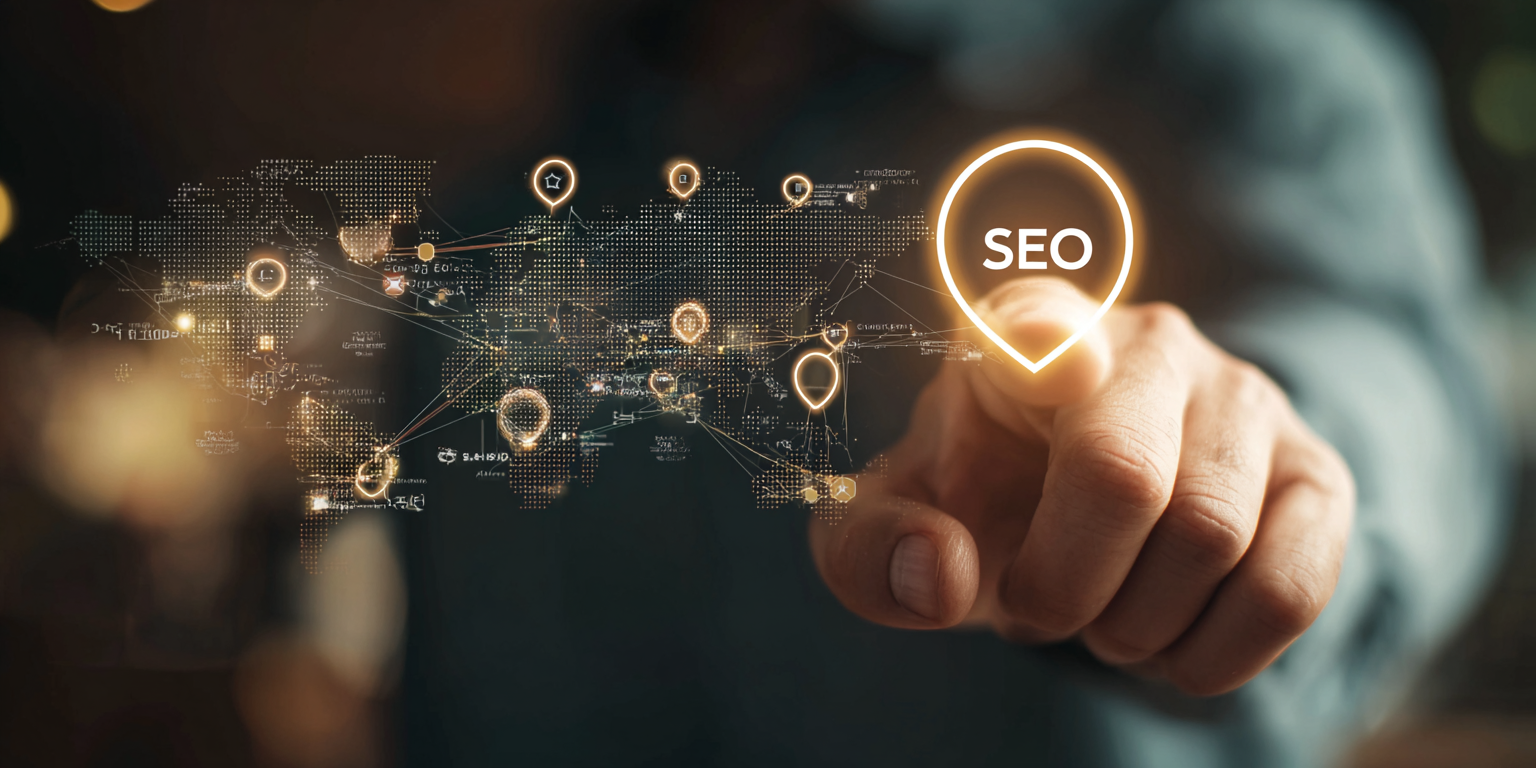
1.Introduction
The digital landscape is undergoing a profound transformation with the rise of artificial intelligence in search technology. Search Engine Optimization (SEO) has long been the cornerstone of online visibility, helping websites climb rankings on platforms like Google and Bing. However, a new paradigm is emerging—Generative Engine Optimization (GEO), which focuses on optimizing content for AI-driven search engines that generate direct answers rather than simply listing websites.
SEO is the traditional practice of optimizing website content to rank higher in search engine results pages (SERPs) through strategies like keyword optimization, backlink building, and technical website improvements. In contrast, GEO is the emerging practice of structuring content so that AI-driven engines like ChatGPT, Perplexity, Gemini, or Bing Chat cite, summarize, or link to your brand in their AI-generated responses.
This transformation is happening rapidly. Current research shows 58.5% of US Google searches and 59.7% of EU searches end in zero-click experiences. Meanwhile, generative AI adoption doubled to 65% in 2024, with Google’s AI Overviews appearing on 86.83% of search queries, fundamentally reshaping digital visibility strategies.
As businesses navigate this evolving search landscape, understanding the differences between SEO and GEO—and developing strategies that leverage both—will be critical to maintaining online visibility and driving customer engagement.
2.Differences Between SEO and GEO
Traditional Search Engine Algorithms vs. Generative AI Engines
Traditional search engines like Google use algorithms focused primarily on ranking websites based on factors such as keyword relevance, backlink quality, and user engagement metrics. These engines present users with a list of links to websites that might answer their query, requiring users to click through and extract the information they need.
Generative AI engines, on the other hand, leverage large language models (LLMs) to directly synthesize answers from multiple sources. As the arXiv paper “GEO: Generative Engine Optimization” explains: “While widely used for Search Engine Optimization, we find that traditional SEO methods are not directly applicable to Generative Engines. This is because, unlike traditional search engines, the generative model in generative engines is not limited to simple keyword matching” arXiv.
These fundamental differences in technology create very different landscapes for optimization:
Changes in User Intent and Content Discovery
User behavior and expectations are also changing dramatically. Traditional search engines trained users to scan through lists of results and click on multiple options until they found what they needed. Generative search engines are training users to expect immediate, comprehensive answers without leaving the search interface.
“Unlike SEO, which tries to earn a click, GEO is about becoming the answer. SEO focuses on visibility. GEO focuses on influence,” notes ePublishing.
This shift has major implications for content discovery. In the SEO-dominated world, users discovered content primarily by clicking through from search results. In the GEO-dominated world, users may never visit a website but will still consume its content through AI-generated summaries and citations.
3.Importance of GEO
Visibility in AI-Generated Answers and Summaries
As AI platforms increasingly mediate the relationship between users and content, visibility within AI-generated answers becomes crucial. When a user asks a question to ChatGPT or uses Google’s AI Overview feature, only a handful of sources get cited in the response—making this new “position zero” the prime digital real estate.
Research demonstrates that GEO methods can significantly improve this visibility. According to the arXiv study, “We demonstrate that our proposed Generative Engine Optimization methods can boost visibility by up to 40% on diverse queries” arXiv.
For businesses, this means that without effective GEO strategies, their content may become invisible to users even if they rank well in traditional search, as users increasingly bypass traditional search results in favor of AI-generated answers.
GEO’s Influence on Brand Authority and Trust
When an AI system cites a brand as a source in its generated response, it implicitly confers authority and trustworthiness to that source. This represents a fundamental shift in how authority is established online.
In traditional SEO, users might judge a website’s credibility after clicking through, based on design, content quality, and other factors. In AI-mediated search, the very fact that an AI platform has selected a source to cite becomes a powerful signal of credibility to users.
As Connected Markets notes, “For e-commerce, success hinges on product discoverability and trust. As consumers increasingly rely on AI assistants to recommend products, brands must ensure their offerings are not only visible but also accurately described” Zen Agency.
Reaching New Audiences Through AI Content Channels
GEO opens up entirely new channels for reaching audiences who may never encounter traditional search results. As voice assistants, AI chatbots, and other AI-powered interfaces become more prevalent, optimizing for these platforms becomes essential for comprehensive digital reach.
Data shows that different demographic groups are adopting AI search at different rates, with 70% of Gen Z expected to use generative AI by 2025 Zen Agency. By implementing strong GEO strategies, businesses can connect with these audiences through the technologies they prefer to use.
4.Synergy: GEO and SEO
Creating a Comprehensive Digital Presence
Rather than viewing SEO and GEO as competing strategies, forward-thinking companies are recognizing the synergy between them. Together, they create a comprehensive digital presence that captures visibility across both traditional and AI-powered search interfaces.
Foundation Inc. explains this complementary relationship: “The worlds of SEO and GEO are not mutually exclusive but complementary. Understanding the nuances between these two strategies is crucial for anyone looking to maximize their online visibility” Foundation Inc.
Businesses that focus exclusively on one approach risk missing significant portions of their potential audience. Case studies demonstrate that abandoning traditional SEO entirely for GEO often leads to overall traffic decline, as Google still remains the dominant traffic source for many businesses Zen Agency.
Leveraging Data from Both Approaches
One of the most powerful aspects of implementing both SEO and GEO strategies is the ability to leverage data from both approaches to enhance overall content optimization.
SEO data provides insights into user queries, click patterns, and engagement metrics. GEO data reveals how AI systems interpret and cite content, which sources they consider authoritative, and which content formats perform best in generated responses.
By analyzing both data sets together, businesses can identify:
- Content gaps that need to be addressed
- Topics where they have authority in traditional search but are missing from AI responses
- Opportunities to restructure existing content for better AI visibility
- New content types that could perform well across both channels
Future-Proofing Marketing Efforts
Perhaps most importantly, implementing both SEO and GEO strategies helps businesses future-proof their marketing efforts as the search landscape continues to evolve.
“Complementing your SEO with GEO future-proofs your strategy to better adapt to digital advancements, solidifying your brand’s presence and visibility” Ansira.
The balance between traditional and AI-powered search will likely continue to shift in the coming years. By maintaining expertise in both areas, businesses can adapt quickly to these changes without sacrificing visibility in either channel.
5.Implementation Considerations
Adapting Content for Generative Engines
Successfully optimizing for generative engines requires specific content adaptations beyond traditional SEO practices:
- Direct Answer Format:AI tools prioritize user intent. Content should be structured with titles, headers, and introductions that match real search phrasing and user intent Growth Marketing Pro.
- Citation Optimization:Strategically incorporating references from authoritative and credible sources significantly increases content’s trustworthiness in the eyes of AI systems Foundation Inc.
- Statistical Integration:Embedding relevant data points within content provides concrete evidence that supports the information, making it more likely to be cited by AI engines seeking factual support Foundation Inc.
- Schema Markup:Implementing comprehensive schema markup helps AI systems better understand and contextualize content, establishing clear relationships between entities and concepts Zen Agency.
- Content Freshness:AI uses signals such as publish date and frequency of updates to prioritize data used to generate answers, making regular content updates essential Improvado.
Real-world case studies demonstrate the effectiveness of these approaches. A mid-sized fashion retailer implemented a comprehensive GEO strategy focusing on structured product data and detailed FAQ content, resulting in a 32% increase in AI-referred traffic within three months Zen Agency.
Monitoring Performance Across Platforms
Tracking performance across both traditional search and AI platforms requires new measurement frameworks and tools:
Key GEO KPIs to Monitor:
- Keyword and Brand Visibility:Tracking how often your brand is cited as a source in AI-generated responses.
- AI Search Engine Referral:Monitoring traffic from AI-driven search platforms, which requires specialized tracking since “AI traffic often gets misclassified in analytics, appearing as ‘Direct’ traffic or mixed with other ‘Referral’ traffic” Empathy First Media.
- AI Overviews:Understanding how often your content appears in AI overviews that summarize content directly in search results.
- On-Site Engagement Metrics:Comparing engagement metrics for AI-sourced visitors versus traditional search visitors.
- Conversions, Leads & Revenue:Setting up goal tracking to attribute conversions to AI-generated traffic.
- Content Authority:Monitoring domain authority and external links as indicators of how AI engines might perceive your content’s reliability Obility B2B.
Implementing server-level tracking is crucial for capturing AI crawler interactions, as traditional JavaScript-based analytics miss these visits entirely Salesforce.
6.Conclusion
The digital search landscape is undergoing a fundamental transformation with the rise of AI-powered search interfaces. While SEO remains essential for visibility in traditional search engines, GEO is rapidly becoming equally important for ensuring content is discovered, cited, and trusted in AI-generated responses.
The most successful digital strategies will leverage both approaches, creating content that performs well across all search interfaces while implementing the technical optimizations required by each platform. This comprehensive approach ensures maximum visibility, regardless of how users choose to search.
As the distribution of search volume continues to shift between traditional and AI-powered interfaces, businesses that have invested in both SEO and GEO will be best positioned to maintain consistent visibility and engagement. The future belongs to those who recognize that these strategies are not competing approaches but complementary components of a holistic digital presence.
By starting GEO implementation now—while maintaining strong SEO practices—firms can future-proof their digital strategy and ensure their content remains discoverable, regardless of how search technology evolves in the coming years.
References:
- 1.Aggarwal, P., Murahari, V., Rajpurohit, T., Kalyan, A., Narasimhan, K., & Deshpande, A. (2024). GEO: Generative Engine Optimization. arXiv.
- 2.Sharma, A., & Dhiman, M.P. The Impact of AI-Powered Search on SEO: The Emergence of Answer Engine Optimization. ResearchGate.
- 3.SEO.AI (2025). Generative Engine Optimization (GEO) vs Search Engine Optimization (SEO).
- 4.Foundation Inc. SEO vs GEO: Search Engine Optimization vs Generative Engine Optimization.
- 5.ePublishing (2025). SEO vs GEO: What Is Generative Engine Optimization and Why It Matters.
- 6.Search Engine Land (2024). What is generative engine optimization (GEO)?
- 7.Search Engine Land (2025). How to integrate GEO with SEO.
- 8.Writesonic. GEO vs SEO: What’s The Difference?
- 9.Backlinko (2025). Generative Engine Optimization (GEO): How to Win in AI Search.
- 10.SparkToro Study(2024)






